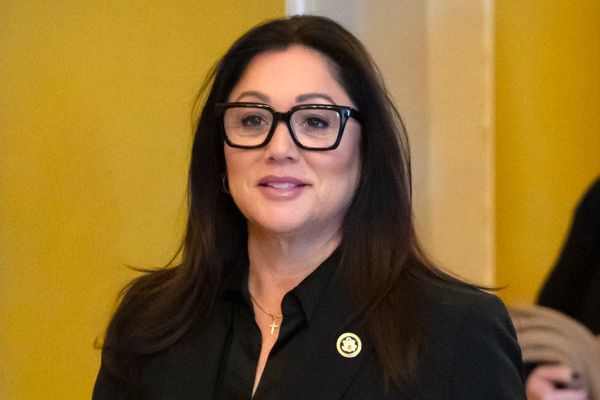
Global supply chains are expected to normalise in 2023 as industry stops playing catch-up.
Despite a return to pre-Covid reliability on the cards for global supply chains, the price of getting goods into New Zealand will remain high.
An initial pullback on shipping capacity at the beginning of the pandemic combined with unprecedented demand for goods and lengthy lockdowns has seen the world playing catch-up for three years.
Global shipping lines like Maersk expect demand for shipping containers to drop as the global economy enters recession, coinciding with New Zealand port companies’ predictions around bringing back regular berthing windows in the first half of 2023.
READ MORE: * Shipping congestion will ease once recession hits * Cruising for a bruising: $$$s v nature in Milford Sound * Ruakura Superhub: Building Aotearoa’s largest inland port
Ports of Auckland chief executive Roger Gray said the return to normal would be a bit like the aviation industry, “It's been a bit tense, you know, there are cancellations, there are failures to be on time. We'll struggle a bit as we shudder and go back into it but throughout the year, I expect to see a return to more normal operations.”
Shipping prices between New Zealand and its major markets went from as low as a few hundred dollars for a container to prices in the thousands.
“In regard to charging and costs, some of the freight rates internationally are starting to drop but I expect you'll see some work by the shipping lines not to go back to where they were with very low prices and certainly port charges across the world will continue to stay up high as port owners look to improve their returns on investment.”
Ports of Auckland will presumably be no different, having received strongly worded communications from the mayor to improve its returns to ratepayers among other things.
ExportNZ senior policy advisor Joshua Tan said shipping service reliability hit 50 percent in October, up from 20 percent to 30 percent earlier in the year.
The pre-Covid average was around 70 percent to 80 percent.
“It's certainly looking like the reliability of services around the world is getting back to normal. New Zealand reflects that as well, albeit a little bit slower.
“Because we are at the end of the supply chain at the bottom of the world, New Zealand is just a little bit slower than the rest of the world.”
He said slowing consumer demand overseas was a major factor in easing supply chains, but at the same time, it meant overseas buyers wouldn’t be purchasing New Zealand goods at the same rates, which was also of concern.
“It’s pretty difficult to predict what’s going to happen and where normal actually is.
“The pre-Covid market was really competitive and offered good container prices for exporters from New Zealand. I guess normal will really depend on how the market itself corrects,” Tan said.
Kotahi Logistics chief executive David Ross said supply and demand rebalancing was already happening outside of the country but disruption, particularly at Port of Tauranga, meant vessels were losing a week or two on the New Zealand coast.
“So far we're not seeing we're not seeing the same level of supply-demand rebalancing happening as the rest of the world.”
“It's a bit of a challenge for exporters because we've done really well up to now, but we've got local conditions that are giving us challenges compared to some other countries that our products compete against. That's a concern,” Ross said.
Risks
Before talking about risks, Tan pointed out that even though there were vulnerabilities in the supply chain, New Zealand had actually stood up to a once-in-a-lifetime event pretty well.
For Tan the major risks for 2023 are the same that have prevailed for most of 2023, being the war in Ukraine and domestic issues such as workforce shortages and other issues facing the wider business community.
Ross said it was important key infrastructure projects required to keep up with demand and changes in industry were approved and executed sooner rather than later.
“First and foremost in our mind is the Port of Tauranga berth extension, which is in the process of approval through the Environment Court. It's very important key projects that are critical to our having the capacity to deal with demand growth are improved in a timely manner.”
Acknowledging his business dropped the ball through the pandemic, Gray said the New Zealand supply chain was finely balanced and events rarely happened in isolation.
“During labour day weekend KiwiRail closed the rail line to Ports of Tauranga for five days. Port of Tauranga is still clogged and as a result of that decision 14 ships were tied up off berth this morning [late December].
“Lyttelton lost their third crane due to a major equipment failure and are down to two. They had five ships tied up out the front.”
Key risks from his perspective include major Covid outbreaks in north Asian countries and ongoing industrial action on Australia’s ports, as well as rail line upgrades across Auckland.
He believes New Zealand’s supply chain needs to move into a 24/7 model to be truly resilient.
“Shipping lines arrive 24/7, ports work 24/7 transport companies turn up five or six days a week for 18 to 20 hours a day and then often cargo owners only accept stock five days a week 7am to 7pm.”
He said working towards a nonstop model where goods didn’t have to sit around as long would create greater capacity and more resilience.
Ports of Auckland has pretty clear constraints to its ability to grow infrastructure, and while it has approval to dredge to allow for larger ships, it has opted to back out of automation and uncertainty from the mayor around it freeing up land and potentially being forced to move from its current location will make it more difficult to meet future infrastructure needs.
However, Gray said the port was garnering support from in council.
“It'd be fair to say that there's a growing understanding within Auckland Council of the crucial role that Auckland plays within the New Zealand supply chain and that if there is a decision made to move the port, then it has to be planned and it has to be staged.
“It has to be signed up to by central government and funded largely probably by central governments. So you just can't click your fingers and move the port. This is an intergenerational decision. And I think there's a real growing understanding of within Council now of the complexity of that process.”







